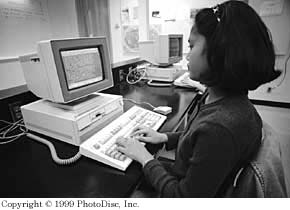|
Once training took place, FIT staff began to look for programs and services in the community that demonstrated both knowledge and background in working with girls. Their first contact was with the Baltimore Urban League, which had established programs designed to focus on self-esteem. FIT and Urban League staff conducted a series of informational sessions for girls who came to the office for weekly group meetings. Staff showed movies with messages about making choices, resolving conflicts, and getting along in the home and community. The group provided an opportunity for the girls to speak openly about issues in their lives—an opportunity they welcomed. The girls began bringing friends with them and also requested additional sessions away from the office, which gave them more activities to attend after school. Seeing the success with this technique, FIT contacted another city program. This group's focus responded to the need for information on sexually transmitted diseases and the growing incidence of teen pregnancy among the adolescent population.
The Baltimore City Health Department, which already had adolescent groups, was also willing to help. FIT staff gained expertise in gender-specific services for females while the girls benefited from the information provided by the Health Department and the Urban League. Again, the training and the groups were provided at no cost to the State.
In 1993, FIT requested technical assistance from OJJDP to determine how best to achieve the unit's desire for comprehensive planning. FIT was anxious to learn how to plan more appropriately for the girls. In May 1993, Community Research Associates (CRA) developed a survey, with the help of FIT, to capture the needs of the population (Community Research Associates, 1994). CRA recommended that the unit:
 Provide special educational testing to ensure that no gap in information between the school system and the Department of Juvenile Justice existed. Provide special educational testing to ensure that no gap in information between the school system and the Department of Juvenile Justice existed.
 Make special efforts to strengthen the girls' academic skills. Make special efforts to strengthen the girls' academic skills.
 Provide basic health information and make appropriate health referrals. Provide basic health information and make appropriate health referrals.
 Identify intensive treatment opportunities for girls who had experienced abuse. Identify intensive treatment opportunities for girls who had experienced abuse.
The group provided an opportunity for the girls to speak openly about issues in their lives.
With assistance from the Maryland Disabilities Law Clinic, FIT began to identify appropriate methods to help parents request Annual Review and Dismissals (ARD's) to obtain the necessary special education testing for their daughters. Based on CRA's recommendations, FIT developed an afterschool tutorial program. Several older youth were willing to tutor the youth in the lower grades. Both groups benefited from the program.
Almost immediately after informational sessions conducted for the health group ended, a local physician notified FIT that she had received a 1-year grant to provide family planning services for adolescent girls and needed girls to participate. Again, FIT did not have to seek funding to provide critical services.
Parent orientation and support have become essential components of the FIT program.
 FIT staff later contacted the Girl Scouts for assistance in delivering female-focused services. The Girl Scouts designed a group for FIT that became involved in arts and crafts, field trips to cultural and social events, and film reviews. FIT now has its own Girl Scout troop, which was started with help from Scout leaders. When it began in 1993, the troop had 20 girls participating in the group every week and now averages about 12 to 15 girls per group. The Girl Scout troop is among the most popular groups at FIT. In addition to the staff facilitator, the troop uses student interns from local colleges who provide new and creative ideas to keep the group fresh.
FIT staff later contacted the Girl Scouts for assistance in delivering female-focused services. The Girl Scouts designed a group for FIT that became involved in arts and crafts, field trips to cultural and social events, and film reviews. FIT now has its own Girl Scout troop, which was started with help from Scout leaders. When it began in 1993, the troop had 20 girls participating in the group every week and now averages about 12 to 15 girls per group. The Girl Scout troop is among the most popular groups at FIT. In addition to the staff facilitator, the troop uses student interns from local colleges who provide new and creative ideas to keep the group fresh.
Parent orientation and support have become essential components of the FIT program. Parents are invited to participate in a parent support group developed at the request of parents who did not know what to do when their daughters were having problems. Because most of the girls in the program are from single-parent homes, many parents want and need some assistance. Often, they were teen parents themselves and do not want their daughters to make the same mistakes they made. This is especially true for single-parent fathers, who are often not sure what to do to meet their daughters' needs and who feel they need a female perspective. Parents who participate often appreciate the opportunity to receive and share information about "what works." Because many girls reside with grandparents, they too are encouraged to participate in the parent groups.
|